Exothermic or endothermic?
Simulation
Some reactions release energy, others absorb energy. All reactions require energy to occur at all.
This energy allows you to combine a variety of molecules together in a reactor, add energy, and see what happens.
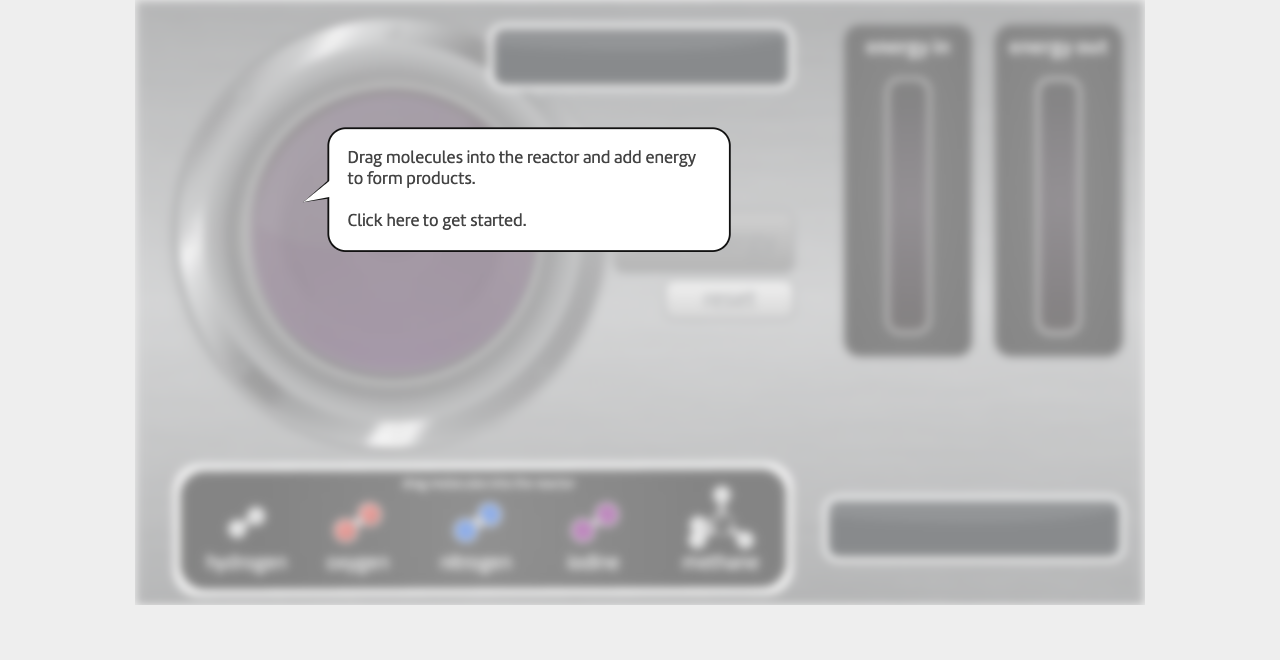
Instructions
Draw a four-column table in your notebook.
Label the columns "Chemical reaction", "Bonds in the reactants", "Bonds in the product", and "Exothermic or endothermic?"
Using the simulator, start dragging molecules into the reactor.
Once all molecules are greyed out, record the number of bonds, and whether they are single, double or triple bonds in the "Bonds in the product" column.
Click "Add energy" and repeat until the chemical reaction occurs.
Record the number of bonds, and whether they are single, double or triple bonds in the "Bonds in the reactants" column.
Record whether the reaction was endothermic or exothermic.
Repeat for five different chemical reactions.
Discussion questions
Why do you think that some reactions require more activation energy than others?
What is your hypothesis to predict whether a reaction will be endothermic or exothermic?
Details
NGSS
- DCI | PS1.B: Some chemical reactions release energy, others store energy.
- PE | HS-PS1-4: Develop a model to illustrate that the release or absorption of energy from a chemical reaction system depends upon the changes in total bond energy.
Learning Objectives
Develop a hypothesis to predict whether a reaction will be endothermic or exothermic.
Concepts
Exothermic reactions
Endothermic reactions
Activation energy
More Chemistry simulations
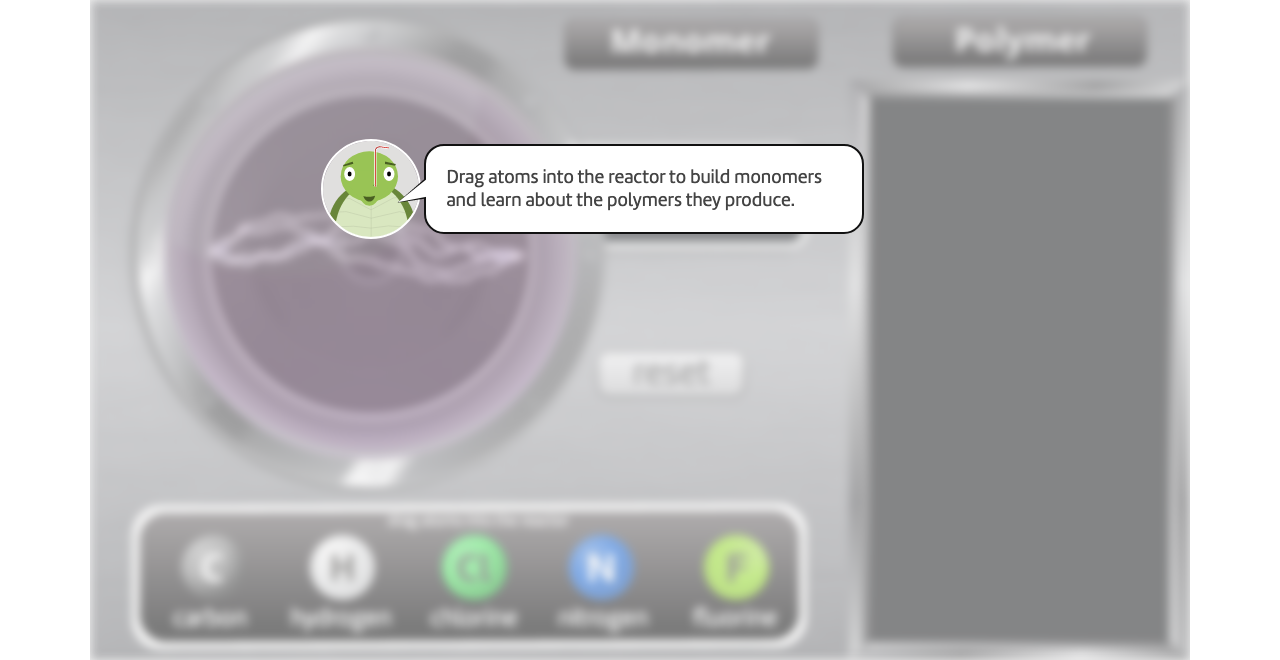
Making plastics from atoms
Unleash your inner mad scientist and create plastics from atoms!
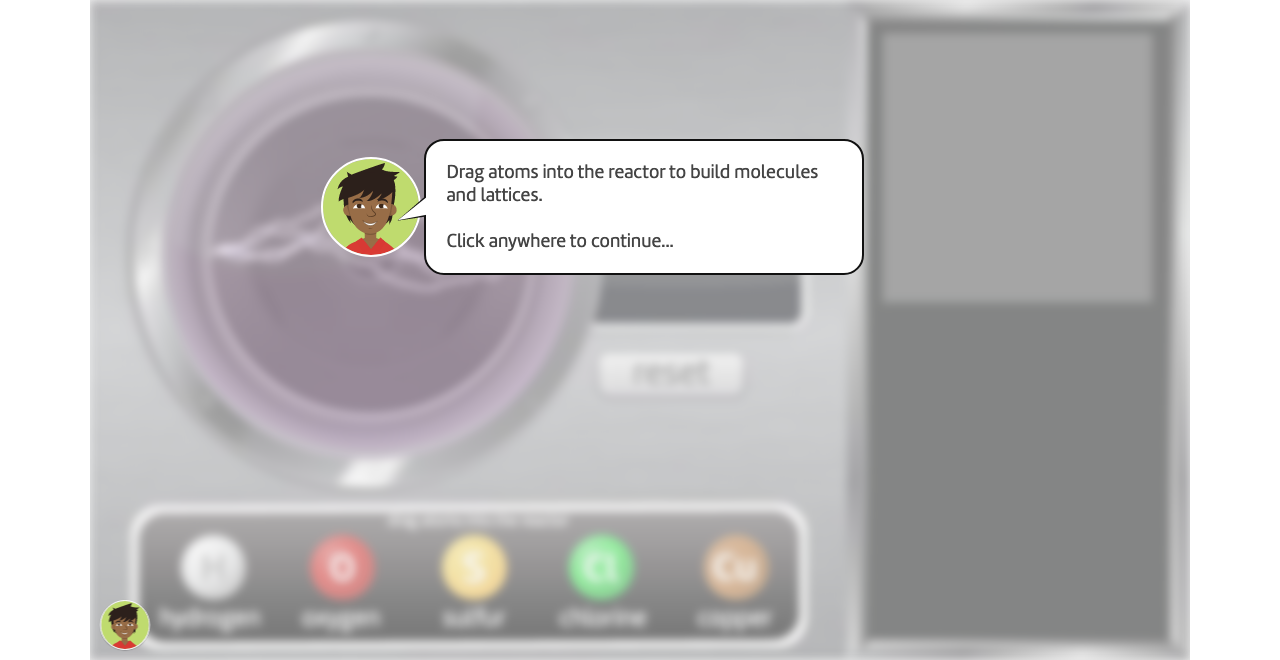
Making molecules and lattices from atoms
Grab your safety goggles, it's time to create some molecules!
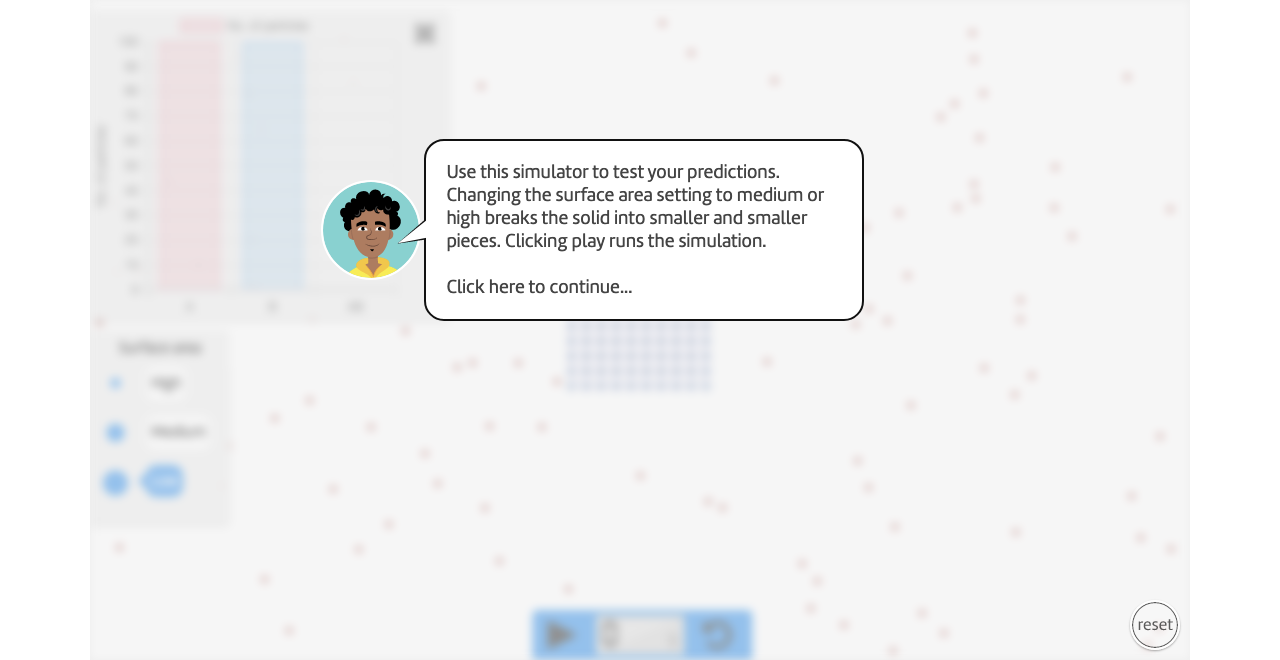
Reaction rates and surface area
Vary surface area and measure the change in reaction rate.
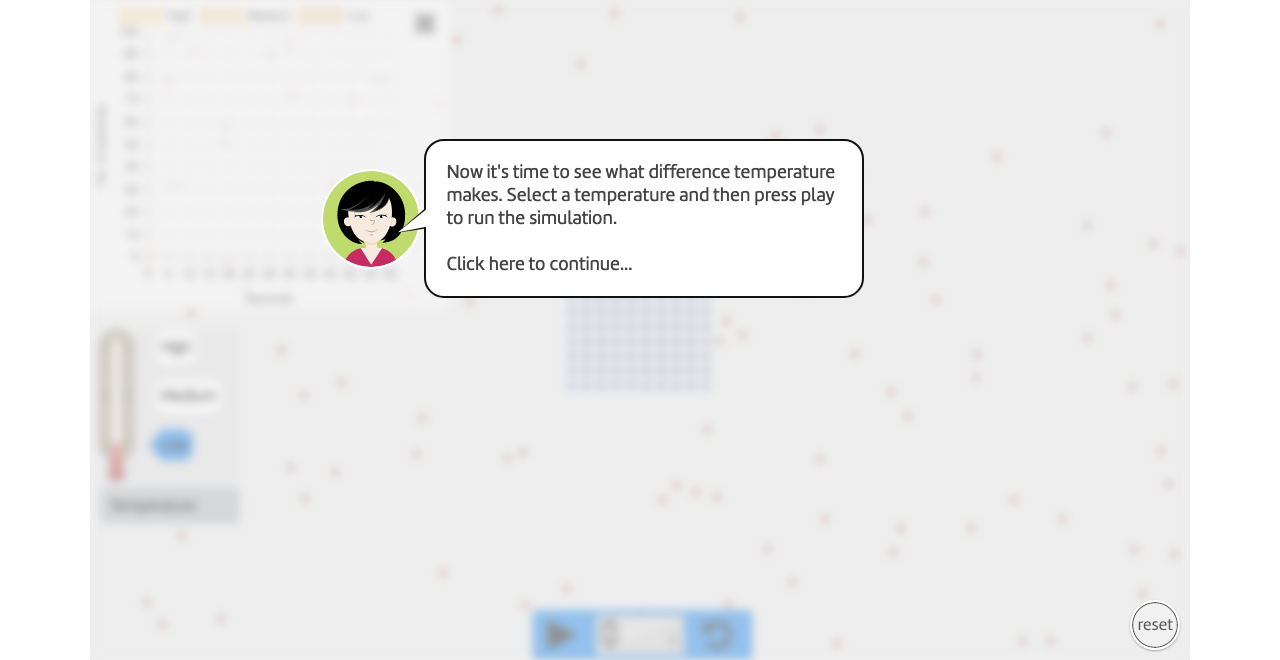
Reaction rates and temperature
Vary temperature and measure the change in reaction rate.
